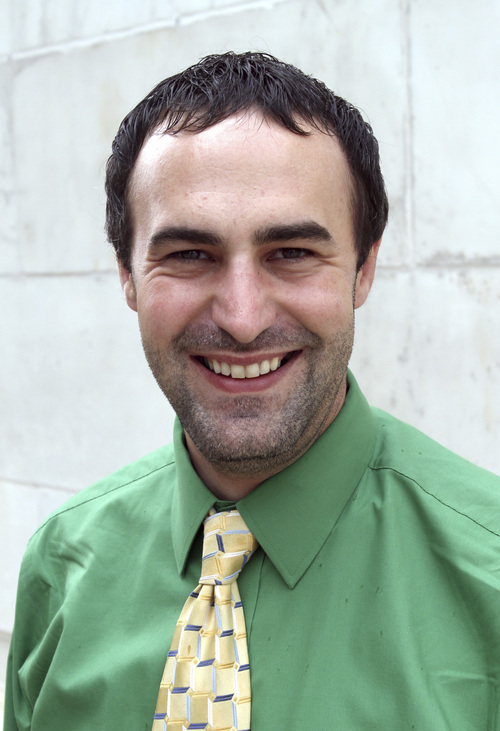This is an archived article that was published on sltrib.com in 2014, and information in the article may be outdated. It is provided only for personal research purposes and may not be reprinted.
Washington
The phrase is inscribed on every LDS temple across the globe: "Holiness to the Lord." It marks the space as sacred Mormon ground, as God's house.
And it's also found inside the Washington Monument.
The 555-foot-tall monument reopened last week after a three-year closure to fix cracked stones from a 2011 earthquake near the nation's capital, and politicians heralded the original public-private partnership that helped build the obelisk as a tribute to America's first president. A similar public-private effort went into checking, correcting and rechecking the 20,000 marble stones that make up the iconic American monument so it could open again.
David Rubenstein, a wealthy Washington-area philanthropist, chipped in $7.5 million to match Congress' appropriation to fix the monument after the earthquake; he told The Associated Press that he was surprised how many people wrote to him about the effort.
"It became clear to me that the Washington Monument symbolizes many things for our country — the freedoms, patriotism, George Washington, leadership," he told the AP. "So it's been moving to see how many people are affected by it."
Utahns may not realize their own contribution to the towering symbol of democracy.
The "Deseret" stone, a two-by-three foot tablet quarried in Manti in 1851 and sent on an arduous journey from the home of the Mormon faith to Washington, was the last — at the time — of the stones donated by various states and territories that made up the union. It sits 220 feet from the base of the monument, joining others from Minnesota, Oregon, Wyoming, Nevada and Nebraska as well as stones donated by the Cherokee Nation and groups representing Chinese and Japanese societies.
Brigham Young, the second president of The Church of Jesus Christ of Latter-day Saints and then-governor of the Territory of Utah, chose a committee to search out a block of white limestone — the closest the state could get to good marble — and it was chipped out of the Sanpete quarries, according to the National Park Service. William Ward, a Mormon pioneer and artist, used crude tools over 40 days to inscribe and polish the stone. "Holiness to the Lord," he wrote over a beehive that remains the symbol of Utah's work ethic. "Deseret," he added underneath.
It took three months for Mormon missionaries to bring the tablet to Washington by ox cart, arriving Sept. 27, 1853.
"The stone is not very hard, and is similar to that known as 'bath stone,' " the Daily National Intelligencer of Washington reported three days later.
It would be a century before Utah sent another stone, this one explaining the transition from the territory called Deseret — by its Mormon occupants, not by any official recognition of Congress — to the territory of Utah and then to its grant of statehood.
On the 55th anniversary of Utah becoming a state, The Salt Lake Tribune reported a lavish ceremony inside the monument's stairwell, where state political leaders added a new stone underneath the original. It read, "Deseret means honey bee / changed to Territory of Utah 1850 / State of Utah 1896."
Then-Sen. Arthur W. Watkins, R-Utah, noted that there had been no ceremony for the first stone and imagined what Young might have said at the time.
"The Utah pioneer," Watkins declared, "would have said: 'Gentlemen, the intrinsic value of this stone is small indeed, even though it was procured, prepared and delivered here under extremely difficult circumstances and at considerable cost. But as a token, as a testimonial of the love and high esteem of my people for George Washington and the noble patriots of his generation and the great work they accomplished, it has a value beyond measure."
Visitors to the monument take an elevator ride to the top for the unique views of Washington. Sadly, the stairs — where you can view the historic treasures of the state stones like Utah's — are closed because of safety concerns.
Morning email » Snack on Political Cornflakes, The Salt Lake Tribune's morning dish of political news. Join our mailing list by emailing cornflakes@sltrib.com or follow us on Twitter, @SLTribPolitics. Check back at politicalcornflakes.com for regular updates.
Burr reports from Washington, D.C., for The Salt Lake Tribune. He can be reached at tburr@sltrib.com or via Twitter @thomaswburr.



